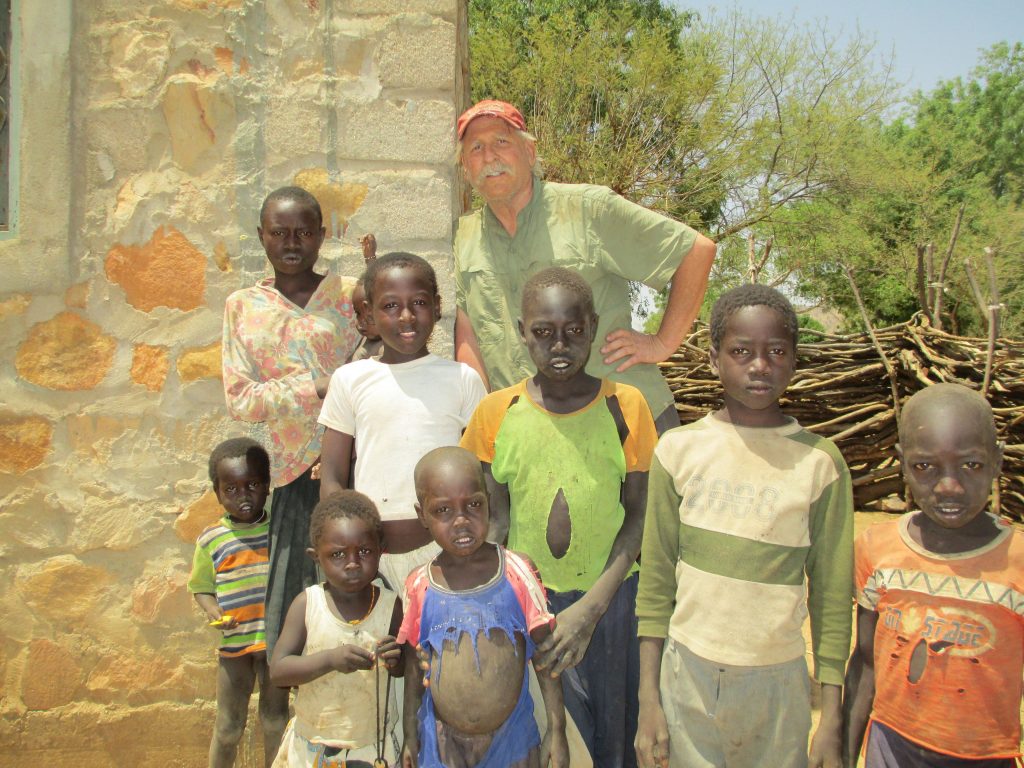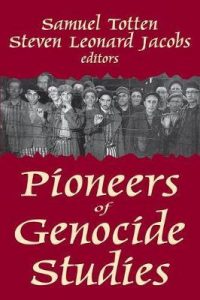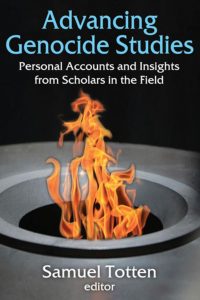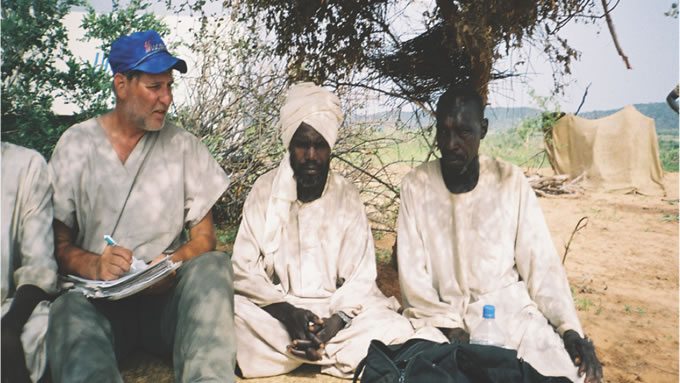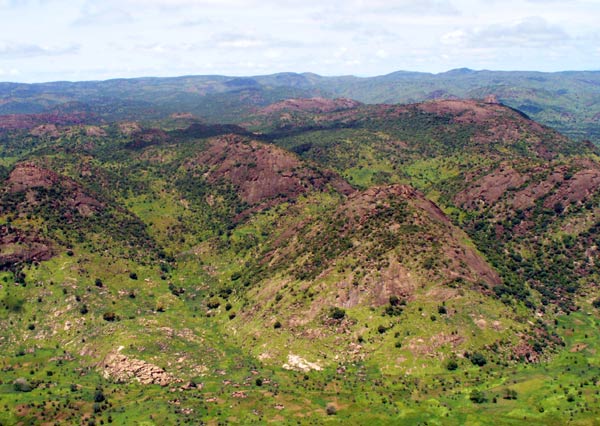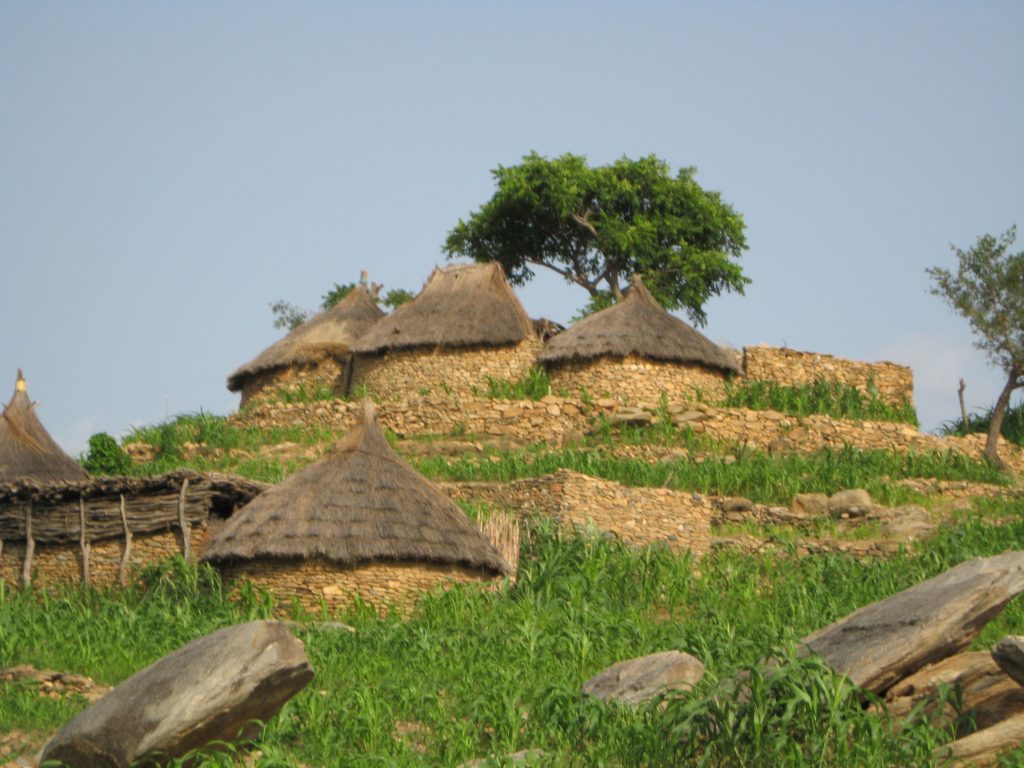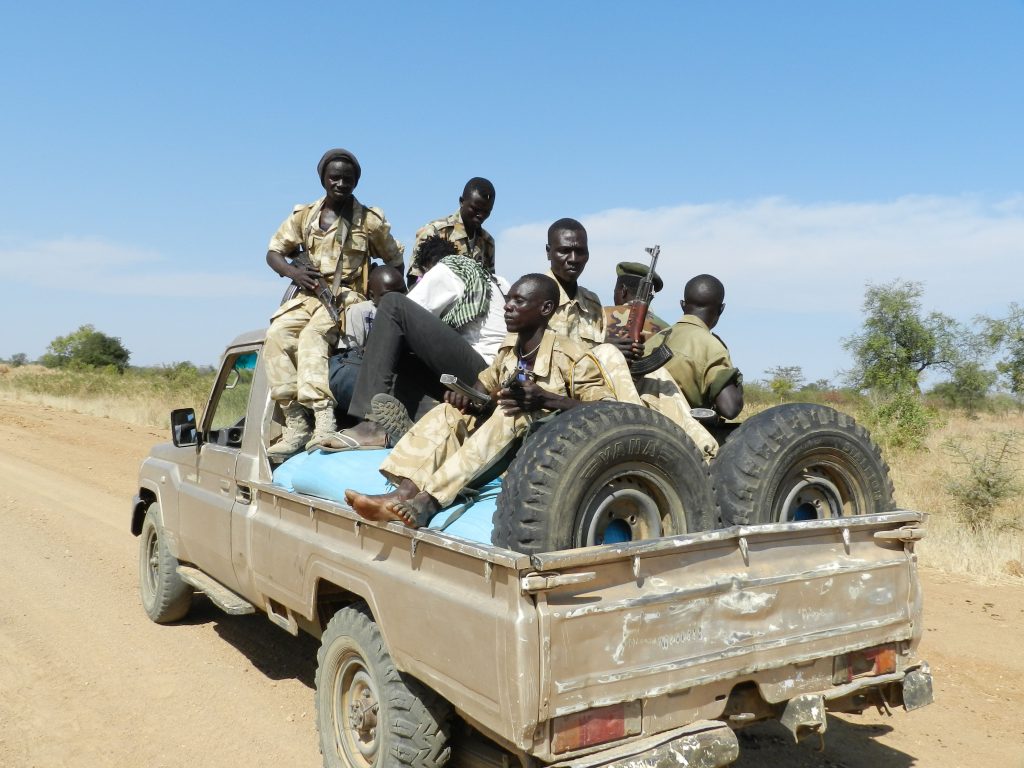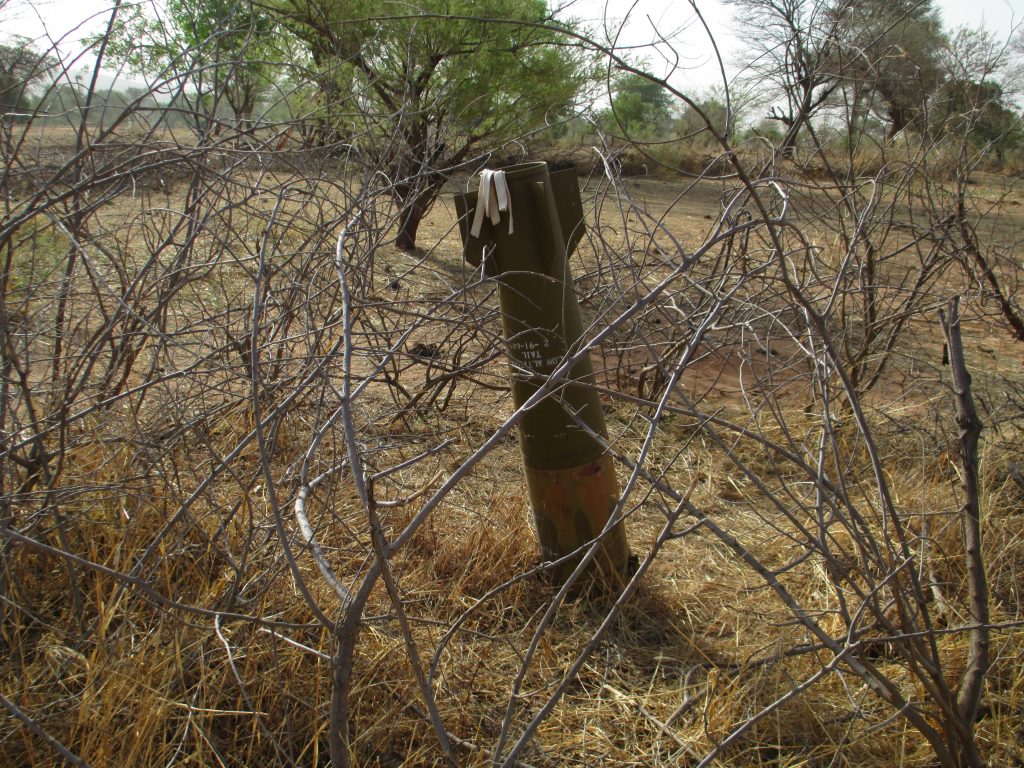An Interview with Genocide Scholar and Anti-Genocide Activist Samuel Totten
Special for the Armenian Weekly
American academic Samuel Totten is probably best known for his scholarship on genocide. Most people, however, are not aware of his anti-genocide activism on the ground.
“The Darfur Genocide impacted me in a way that was up close and personal,” Totten told the Armenian Weekly in a recent interview. During the summer of 2004, Totten served as one of the 24 investigators with the United States Atrocities Documentation Project, the purpose of which was to interview survivors about their experiences during attacks carried out by the Sudanese government troops and the Janjaweed (hired militia) against the black Africans of Darfur.
Four years later, during a short stop in Nairobi, a chance meeting led to him visiting the Nuba Mountains for the first time. There, he began to meet people who had survived the so-called “genocide by attrition” of the Nuba Mountains people in the 1990s.
After his first visit, Totten made more trips back to the region to interview survivors. Then, after war broke out between the government of Sudan and Nuba rebels (Sudan People’s Liberation Movement—North) in July 2011, Totten’s missions to the Nuba Mountains took a drastic turn, changing from conducting interviews to running humanitarian operations.
“I began, in 2012, to truck food up to those Nuba civilians who had been bombed off their farms and were in desperate need of food,” Totten explained.
Totten’s missions to the Nuba Mountains are ongoing. “Neither the UN or any of its agencies nor nongovernmental organizations are providing any relief, protection, virtually nothing,” he said. “I feel compelled to maintain a focus on the Nuba Mountains. To not do so is to leave the Nuba people bereft.”
Aram Harumi recently sat down with Totten to find out more about his work in the Nuba Mountains, in this exclusive interview for the Armenian Weekly. Below is the interview in its entirety.
***
Aram Harumi: Why did you get interested in genocide studies to begin with?
Samuel Totten: This is a very long story, actually, which I’ve delineated, at least in part, in two different essays in two different books: Pioneers of Genocide Studies, edited by Samuel Totten and Steven Jacobs (Transaction Publishers, 2002), and Advancing Genocide Studies (Transaction Publishers, 2015). The titles of the essays are “A Matter of Conscience” and “A Matter of Conscience: Part II.”
Succinctly stated, my initial interest arose out of my work on the behalf of prisoners of conscience with Amnesty International (AI). What sparked my interest was an article by Ms. Rose Styron, a noted human rights activist, and the wife of the late novelist William Styron (author of such fictional works as The Confessions of Nat Turner and Sophie’s Choice, among many others). Rose Styron’s piece was simply titled “Torture in Chile.” As a recent university graduate who considered himself at least somewhat well-informed, I was taken aback and astonished that (a) torture such as she described was a matter of fact in many parts of the world—indeed, so ubiquitous; (b) aghast at the horrific nature of the torture and what some governments subjected their own citizens and so-called enemies to in the name of national security; and (c) ashamed that I was so ignorant of what went on in the world. That article, essentially, launched my dedication to and my career in the fields of human rights and genocide studies.
After serving for two years (1976-1978) in different capacities with AI in Australia and engaging with AI volunteers in Nepal, Israel, and the United States over a several-year period, I serendipitously became good friends with Dr. Israel W. Charny, a professor of psychology at Tel Aviv University and a man who is now considered one of the doyens of genocide studies. At the time, I was an English teacher at the Walworth Barbour American International School in Israel. His son attended the school, and a colleague of mine who taught Charny’s son mentioned to Charny that I was an avid human rights activist. At the time, Charny was working on his first book on genocide, and for the rest of the year I was in Israel we engaged in talk about genocide.
Upon my return to the U.S., Charny asked me to contribute a chapter to what turned out to be Volume One of Genocide: A Critical Bibliographic Series. My contribution ended up being so detailed and so long that Charny, instead of rejecting it as many editors would have done—or, at the least, insisted that I cut the piece by three-quarters—urged me to revise it and in doing so to forge three chapters out of the one.
By then I had earned my doctorate at Columbia University and was about to enter academia. Concomitantly, my thinking at the time was, “Thousands and thousands of people across the globe are addressing the problem of major human rights violations of all kinds, but, ironically, very, very few are addressing the issue of genocide.” That realization prompted me to, essentially, begin work on my first book about genocide, and in the process to become an autodidact in regard to genocide theory, the history of genocide, individual cases of genocide, issues of the prevention and intervention of genocide, etc. That was in 1987.
A.H.: How did the Darfur Genocide impact you?
S.T.: The Darfur Genocide impacted me in a way that was up close and personal. During the summer of 2004, I served as one of the 24 investigators with the United States’ Atrocities Documentation Project, whose express purpose was to interview survivors about their experiences during the scorched-earth attacks carried out by government of Sudan troops and the Janjaweed (hired militia) against the black Africans of Darfur.
My partner in the field, a lawyer with the U.S. Justice Department, and I interviewed 49 survivors. Each interview was an hour-and-a-half to two hours each, and they went into every ghastly detail of the attacks: the brutal gang rapes against the black African girls and women (some as young as eight years old); the impaling and killing of black African babies in front of their mothers; the burning alive of elderly black Africans who could not manage to flee from their tukuls (homes) before they were torched; the shootings, beatings, and torture of the black Africans as they attempted to flee from the onslaught. Eight hours a day, seven days a week, we conducted those interviews. There were not a few times when I literally had to bite my lip as hard as I could to keep from emoting in front of the interviewees/survivors. My rage was such that I personally wished I could go after the perpetrators myself.
I took that rage and poured it into ceaseless work (conducting field work in the refugee camps along the Chad/Darfur, Sudan border, and, more recently (since 2010), in the Nuba Mountains in Sudan; writing and publishing over 50 guest commentaries for newspapers across the globe; writing and publishing of five books, two on Darfur and three on the Nuba Mountains; giving talks about the plight of the people of Darfur and the Nuba Mountains, all across the U.S. and Europe; and, more recently (since 2012), hauling food up to those people suffering the most from severe malnutrition and starvation in the Nuba Mountains).
A.H.: Specifically, what got you informed and interested in the issues of the Nuba Mountains?
S.T.: In the aftermath of my work with the Atrocities Documentation Project, in July and August 2004, I had a keen desire to head into Darfur itself to interview survivors of the Darfur genocide. For six long years I tried every which way to obtain permission to enter Darfur, all to no avail. (I think that was due to the fact that the government of Sudan (GoS) was well aware of my publications castigating the GoS for its actions in Darfur.)
Long story short, in 2008 I was serving as a Fulbright Fellow at the National University of Rwanda, and I had to fly to the University of Chicago to give a talk on Darfur. During a stop in Nairobi, a couple of guys got on and sat down next to me who were returning to the States for R&R from their work in Sudan. I shared with them how I ached to get into Sudan but had had no luck in my attempt to do so. One fellow informed me that survivors of the Darfur Genocide actually resided in an internally displaced persons (IDP) camp not far from where he lived in the Nuba Mountains, and said he believed that he could arrange to get me into the Nuba Mountains without the GoS’s knowledge of my presence (and thus I would not need to apply for a visa), and not only that but on a free flight on a cargo plane owned by his organization.
Several months later I flew from Nairobi to Kauda in the Nuba Mountains to interview the survivors in the aforementioned IDP camp. Throughout my first stay, and then my second stay in the Nuba Mountains, I began to meet people who had survived the so-called “genocide by attrition” of the Nuba Mountains people in the 1990s. Figuring that I had ready access to such individuals, I ended up making several more trips back to the region to interview them. Then, after war broke out between the GoS and Nuba rebels (Sudan People’s Liberation Movement—North) in July 2011, I began, in 2012, to truck food up to those Nuba civilians who had been bombed off their farms and were in desperate need of food.
A.H.: During your trip did you feel you were in critical danger at any time?
S.T.: Not during my first two trips to the Nuba Mountains, in 2010 and 2011, but definitely during my last five trips to the Nuba Mountains in 2012, 2013, 2014, 2015, and 2016, all of the latter of which was during the ongoing war between the Nuba and the GoS.
Countless times—while in people’s compounds, in suqs (open market places), and while traveling—Antonov bombers flew overhead on their way to a bombing mission. No one, of course, ever knows exactly where the Antonovs will drop their bombs, and thus each and every time an Antonov flies overhead just about everyone makes a run for it—either to one of the eight-foot holes people have dug all around their compounds and suqs, or out into the desert in search of a deep rut one can hunker down in or a large rock or huge tree one can hide behind to protect oneself from shrapnel flying off of the bombs. The shrapnel are large pieces of twisted metal that fly through the air and are capable, literally, of turning a body into mush or something approaching ground hamburger. The shrapnel is also capable of, again literally, sheering off a person’s head, arm, or leg. I have seen dozens of people in the Nuba who have lost legs and arms due to being hit by shrapnel.
On one trip to the Nuba in 2015, various Antonovs flew overhead five different times in the course of an hour. Each and every time, everyone in the suq took off racing for cover, and later, while we were in our vehicle, everyone jumped out and ran for their lives.
Each and every time an Antonov flies overhead, at least this was so for me, one does not know if this is his or her last day of life on earth.
Certainly the spookiest experience I had in the Nuba was also in 2015, but on a different trip. My team and I (that is, my driver and interpreter and myself) had just driven through a small town called Heiban on our way across the desert. Some 15-20 minutes after we passed through the town, a Suhkoi fighter jet flew in and shot a missile at three teenagers who were running for one of the holes I’ve mentioned. The missile literally tore one of the boys in half. The next day his father carried both halves of his son to his grave and set them down to be buried. I am all but absolutely positive that if we, with a white Land Cruiser, had been driving through Heiban when the Suhkoi attacked, we would have been the target—the perfect target, really—and if it had hit our vehicle with a missile, we would have been incinerated. Not only did we have a full tank of petrol, but we were carrying extra jerry cans of petrol, as there are no such things as gas stations in the Nuba Mountains.
A.H.: It is easier to raise money and just give the people working at these relief stations money. What made you take matters into your own hands and actually go to this area and hand out food?
S.T.: Yes, you’re correct, it would certainly be a quantum leap easier to simply raise money and send it to one organization or another working on the behalf of the Nuba Mountains people (though, unfortunately, there are very few doing so).
From the very beginning my intent in raising funds, purchasing food, and then trucking up to the Nuba Mountains was to get food to the most desperate people in the Nuba Mountains—to those people who, for whatever reason, either did not have ready access to food or were not receiving food from local relief agencies in the Nuba Mountains. I felt and believed that that was what I could contribute to the effort to help the Nuba. And as a result of that, each and every time I head back to the Nuba Mountains I make a point of speaking with people in the know (NRRDO, a local Nuba relief agency, leaders of the SPLM-N, and citizen journalists, among others) which groups of people in the Nuba were in most desperate need, and that is where I head to deliver the food.
Ultimately, it was, as the titles of the two chapters I mentioned at the outset of this interview suggested, a matter of conscience.
A.H.: Have you looked at similar issues in different parts of the world as well?
S.T.: I have, but thus far I have solely focused on the plight of the people of the Nuba Mountains. The three other places that I have seriously considered heading to in order to provide whatever type of assistance is needed by various peoples are Burundi, the Central African Republic, and Burma (Myanmar).
I have remained focused on the Nuba and not headed to the aforementioned places due to three primary reasons. First, since neither the UN or any of its agencies nor nongovernmental organizations are providing any relief, protection, virtually nothing, I feel compelled to maintain a focus on the Nuba Mountains. To not do so is to leave the Nuba people bereft. Second, it takes a good amount of time to figure out what the situation on the ground is in different nations, what is needed in the way of assistance, and how to go about making the connections one needs in order to carry out a mission in a satisfactory manner. Also, each of the aforementioned nations poses its own dangers to outsiders and one needs to be as fully informed as possible about such dangers and how to avoid them if at all possible—or, at least, how to handle them so that one does not end up maimed or killed.
A.H.: How big an issue is there of nonrecognition by the Government of Sudan about how the people in the Nuba Mountains are not being fed sufficiently?
S.T.: Bombing civilian farms, forcing people off their farms and out of their villages and away from their sources of food is the modus operandi of the GoS. So, I imagine the GoS does not waste any time at all worrying about the plight and fate of the people of the Nuba Mountains. In fact, I firmly believe that by denying the Nuba ready access to food, the GoS is hoping to force the Nuba from the Nuba Mountains and over the border to another country and/or into refugee camps. In other words, it is a ploy to cleanse the area of the Nuba—a classic case of ethnic cleansing.
A.H.: Was there a certain part of the trip that had a strong effect on you?
S.T.: Yes, three in particular. First, the close calls when the Antonov bombers flew over. Second, the relatively close call when the Sukhoi fighter jet attacked Heiban. Third, I came across a young boy who had accidentally set off a piece of unexploded ordnance, and I raced across the desert in an attempt to get him to the only hospital in the entire region, but he ended up dying. Not only had one of his legs been nearly ripped off with bones sticking out of his skin (a compound fracture) but he had a large, deep wound on his lower abdomen that had made mush of many of his organs. To this day, I have great, great difficulty when recalling the death of that young boy, who, by the way, had walked well over 10 miles from his parents’ home in search of mangos. I am a tough sonofabitch, but whenever I think of that poor, innocent kid, I have to fight off crying. Finally, the last time I was in the Nuba, I came across a group of people who were eking out an existence in a makeshift IDP camp, and therein I came across many babies who were so weak from a lack of food that they literally could not lift their heads up; that is, their little heads were lolling to the side, as if they were rag dolls. That rips your guts out.
A.H.: Is there a message you want people to know about your time in the Nuba Mountains?
S.T.: That the civilians in the Nuba Mountains are completely isolated. No one, but no one, other than individuals such as myself, is attempting to help them. Not the UN. Not the World Food Program. Not Oxfam. Not Doctors Without Borders. Not a single aid agency is in the Nuba Mountains—out of fear of being attacked and killed by the GoS.
In fact, Sudanese President Omar al Bashir has stated that anyone who crosses the border into Sudan without express permission from the GoS shall have his/her throat slit. I imagine that is not an idle threat, for at the outbreak of the war in July 2011, GoS soldiers went door to door in various towns and villages, knocked on doors, and if the person who answered was affiliated in anyway with the Nuba, their necks were slit open from ear to ear and they bled out and died on the very spot where they dropped to the ground.
A.H.: Is there a way people can help you raise money for the people in the Nuba Mountains?
S.T.: Yes, thank you for asking. Individuals can send me a check designated for the purchase of food and/or medicine for the Nuba people. My home address is 18967 Melanie Road, Springdale, Ark. 72764. Not a single dollar goes to anything other than food—not travel costs, not the cost to hire a vehicle and driver, not the cost to hire an interpreter, etc.
I should note that each trip to the Nuba to haul in food costs approximately $8,000. To purchase the food for the Nuba ranges from $3,000 to $4,000. Then I have to cover the cost my round-trip airline ticket to Nairobi, Kenya, and back; another airline ticket to get to Juba in South Sudan, and back; and a third ticket to get to the Yida Refugee Camp, along the South Sudan/Sudan border, and back; the rental of a Land Cruiser and payment for the driver; payment for an interpreter; etc.
Source: Armenian Weekly
Link: ‘A Matter of Conscience’: An Interview with Genocide Scholar and Anti-Genocide Activist Samuel Totten

